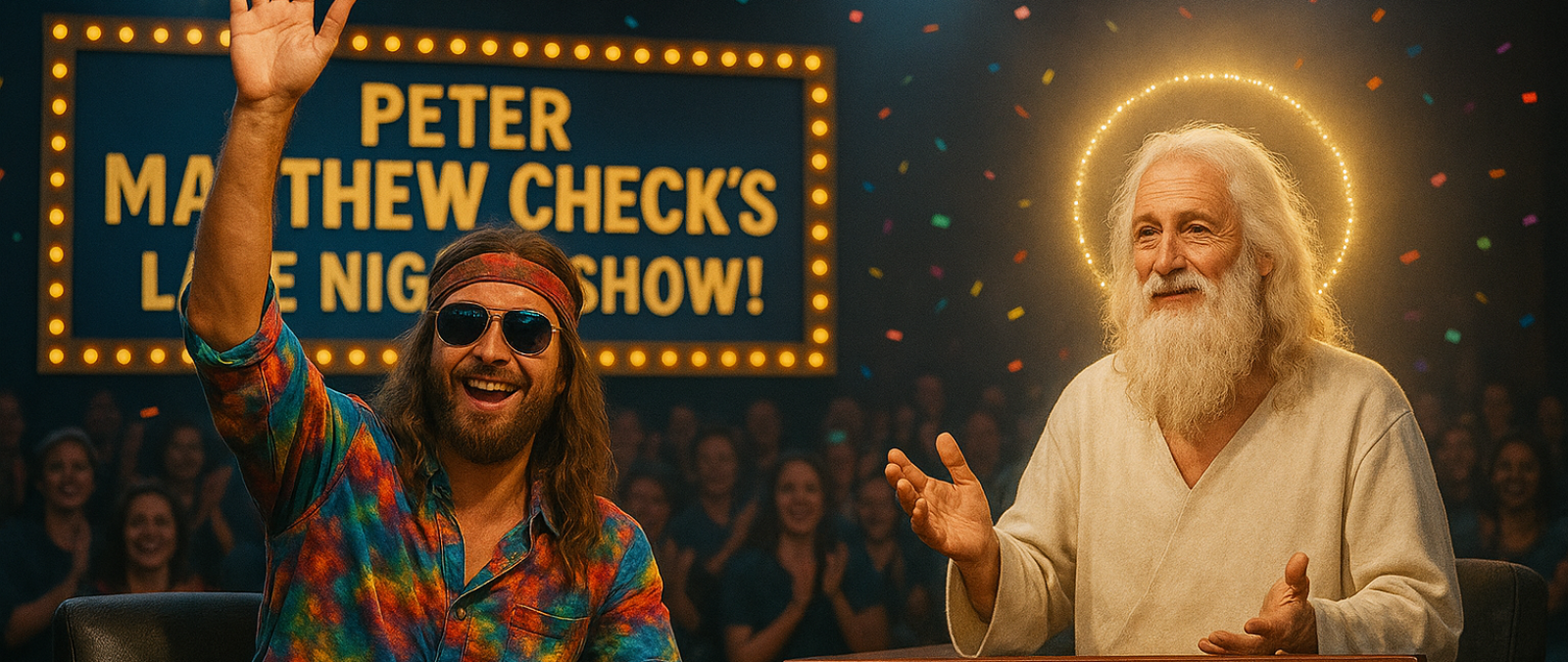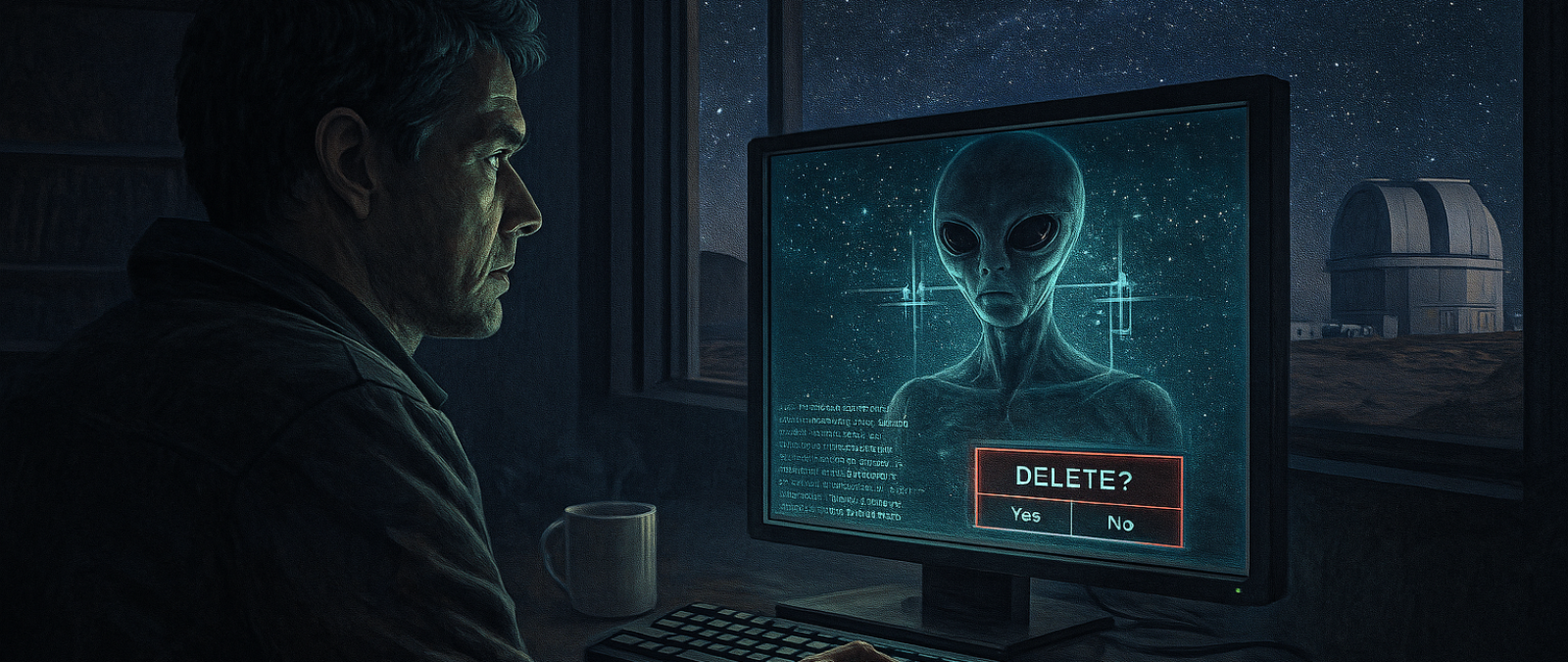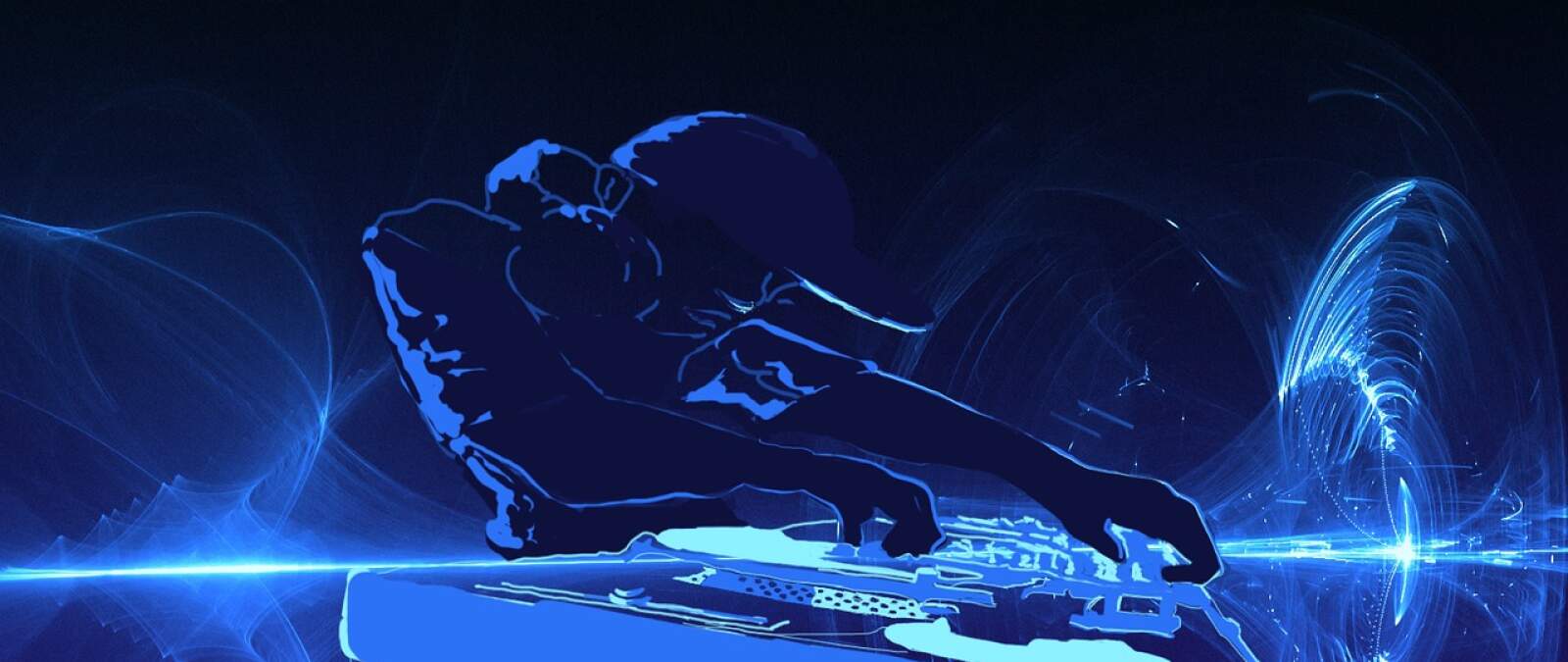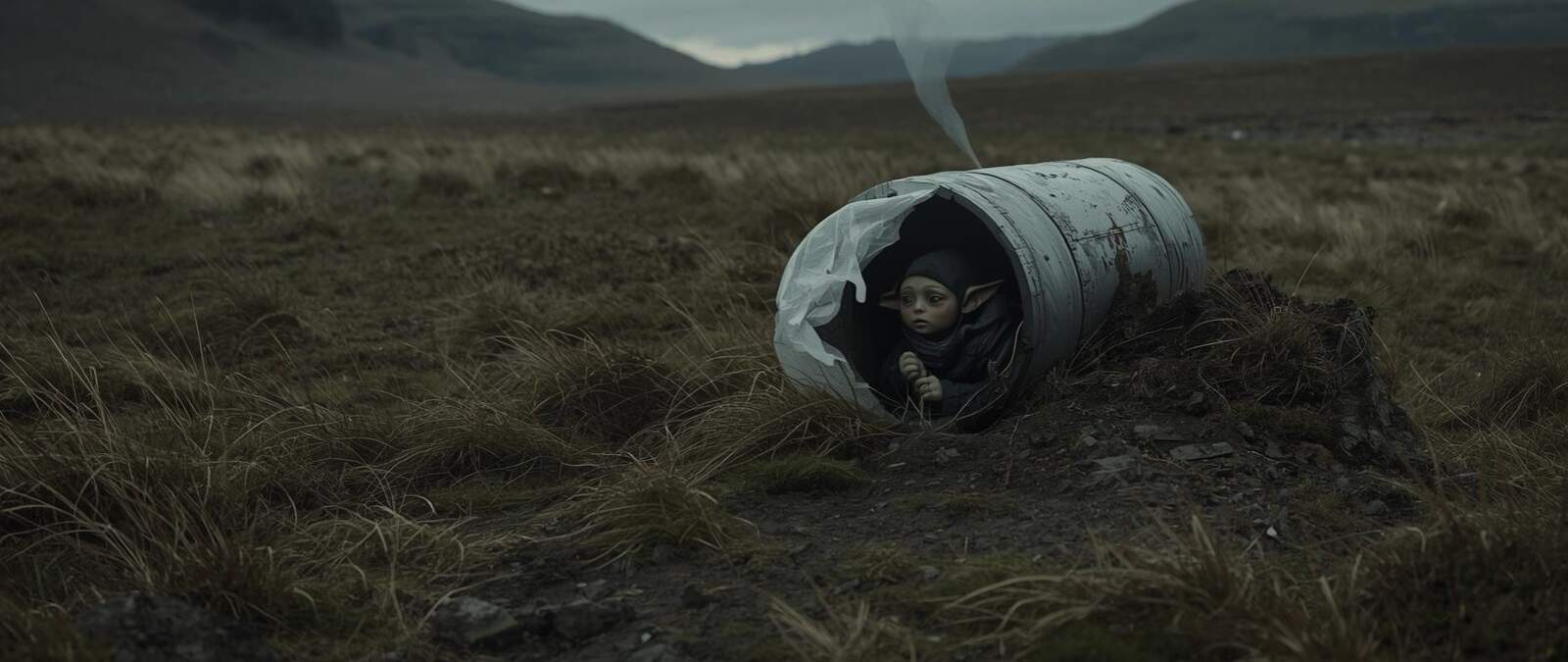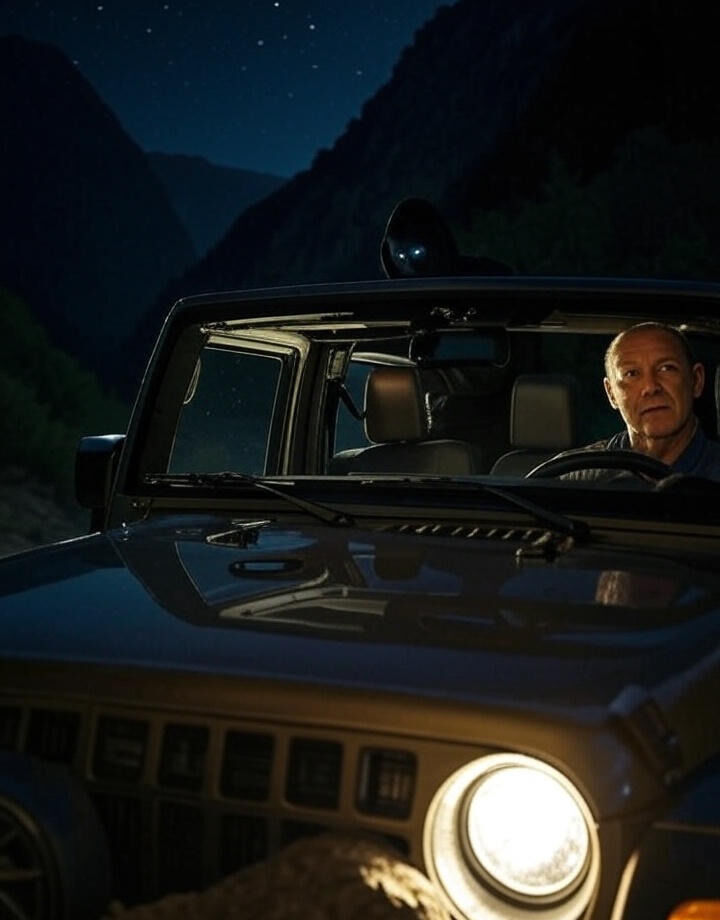Analysis of the Short Story
Author: GR
1. Plot Summary
The story follows John Westlund, a civil engineer driving home through a dark mountain gorge. He encounters a mysterious figure – Mar Robidal (or his humanoid copy), who claims to be an envoy from the planet Syrus. Robidal warns of an impending invasion by the marauders from Amaru, who have infiltrated Earth secretly through “technological assistance” and taken control without open conflict. At first, Westlund thinks Robidal is insane and plans to hand him over to the police, but gradually he is convinced by the vision of harmony versus chaos. In the end, he decides to help spread the message rather than stick to his original plan. The story culminates in a philosophical realization about the hidden loss of freedom on Earth.
The plot is short but dense – it takes place mostly in the car during one night, creating a claustrophobic atmosphere reminiscent of a road-trip thriller with sci-fi elements.
2. Character Analysis
John Westlund: The protagonist represents an ordinary man – a realist, engineer, car enthusiast, and sci-fi fan from his youth. His development is key: initially skeptical and pragmatic (wants to “catch” Robidal and turn him in), he gradually undergoes a transformation through fear, curiosity, and empathy. This symbolizes awakening from illusion – moving from ignoring conspiracy theories to active resistance. Westlund is not a classical hero; he is passive and reactive, making him relatable to readers. His thoughts (e.g., “That was a pretty bad situation”) reveal his inner conflict between rationality and intuition.
Mar Robidal: This character is the archetypal “messenger of truth” in sci-fi – cold, mechanical, emotionless (his eyes are “empty”). As a humanoid copy, he represents the hybrid of man and technology, underlining the theme of dehumanization. His declarative dialogues (“There is no time to waste”) recall robotic expression from classic sci-fi. Robidal is not fully alien – he looks human, highlighting the difficulty of creating a truly foreign being in the genre. At the end, he breaks down (after realizing the time shift), which humanizes him and adds depth.
Secondary elements (like Westlund’s colleagues or the marauders) are only hinted at, keeping the focus on the dialogue between the two, reminiscent of philosophical debates in works like The Matrix (hidden control).
3. Themes and Motifs
The story is rich in themes typical of the alien infiltration subgenre, where invasion is hidden rather than open.
-
Hidden invasion and conspiracy: The marauders secretly control Earth through “technological assistance,” echoing UFO conspiracy theories and government collusion. Message: freedom is an illusion; the powerful (governments) collaborate with “alien” forces for control. This resonates with real-world concerns (e.g., globalization, corporations), where “aid” breeds dependence.
-
Freedom vs. slavery: Harmony (before invasion) vs. chaos (after) contrasts an ideal society with one under manipulation. The marauders bring “prosperity” but at the cost of sovereignty – a metaphor for colonialism or modern imperialism. Westlund’s realization (“I know those latter feelings better”) suggests Earth is already “enslaved.”
-
The role of the individual: The story ends optimistically – “even a single snowflake can start an avalanche”. This underscores that even an ordinary person can resist the system, similar to They Live or Invasion of the Body Snatchers, where invasion symbolizes conformity.
-
Time and fate: The time shift (from 1941 to 2006) adds another layer – the mission fails due to “error,” suggesting fate may be inevitable, yet resistance remains possible.
4. Structure and Style
-
Structure: The story is linear, with a classic dramatic arc: exposition (Westlund’s drive), rising tension (meeting Robidal), climax (the vision and revelation), and resolution (decision to help). The short timeframe (one night) intensifies the effect – similar to H.G. Wells or Philip K. Dick short stories. The time jump at the end adds a sci-fi twist.
-
Style: Told in third person, focusing on Westlund’s inner experience (thoughts, fear), which builds suspense. Dialogues are crucial – Robidal’s are formal and repetitive (“There is no time to waste”), emphasizing his mechanical nature. The language is simple, accessible, with suspenseful moments (short sentences in action: “The jeep door opened”). Sci-fi terminology (vibrational energy, humanoid projection) is introduced naturally.
The style recalls “rational sci-fi,” where invasion is logically explained.
5. Symbolism and Sci-Fi Elements
-
Symbolism: The dark gorge represents isolation and the unknown; Robidal’s blue eyes – strangeness and truth (light in darkness). The car represents Westlund’s “safe world,” which is disrupted (the engine won’t start – symbol of manipulation). The vision of harmony vs. chaos is a metaphor for heaven and hell, evoking biblical motifs in sci-fi.
-
Sci-Fi Elements: The story uses the trope of “hidden invasion,” where aliens look human and control through politics. The humanoid copy is original – a mix of energy and consciousness, forbidden technology, adding an ethical dimension. No big action scenes (lasers, ships), but psychological invasion, akin to Clarke’s Childhood’s End or Heinlein’s The Puppet Masters.
6. Critical Perspective and Comparison
The story excels at building tension and conveying a philosophical message – warning against blind trust in “assistance” (a metaphor for contemporary global influences). Weakness: some elements (like the time shift) may feel arbitrary, and Robidal’s exposition can be heavy-handed. Overall, it’s a clever allegory of conspiracy, comparable to John Carpenter’s They Live or the TV series V (alien invasion). Within the sci-fi invasion tradition, it stands out as a “rational” invasion – not for resources, but for control.
The message is ultimately optimistic: even in a subjugated world, the individual can spark change. This makes the story both inspiring and mysterious, adding another dimension to its impact.
